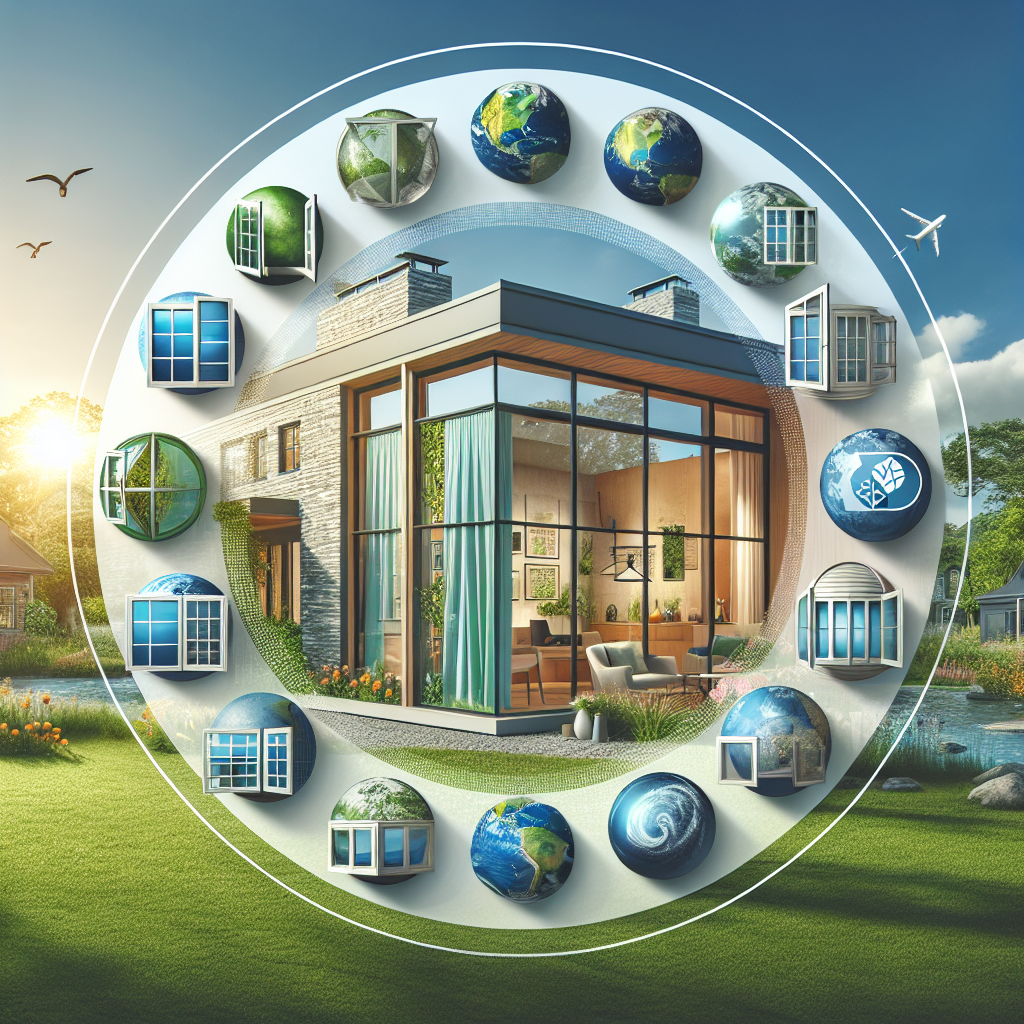In today’s world, where climate change and environmental concerns dominate headlines, the construction and renovation of homes have seen a significant shift towards sustainability. An essential aspect of building practices that supports eco-friendly living is glazing—the term used for windows and doors that provide light and ventilation while helping to insulate your home. Understanding your options for eco-friendly glazing tailored to your specific climate can make a significant difference in achieving an energy-efficient and sustainable lifestyle.
What is Eco-Friendly Glazing?
Eco-friendly glazing refers to window and door technologies designed to minimize energy consumption while maximizing natural light and aesthetics. These glazed surfaces can help reduce heating and cooling costs, minimize ecological footprints, and provide increased comfort for occupants. They come equipped with advanced features like Low-E coatings, triple glazing, or argon gas fills that contribute to their efficiency.
Why Choose Eco-Friendly Glazing?
There are many reasons to consider eco-friendly glazing for your home:
-
Energy Efficiency: Eco-friendly glazing often utilizes technologies that significantly decrease heat loss in winter and keep homes cool in summer. This means lower energy bills and a reduced reliance on heating and cooling systems.
-
Sustainability: Using sustainable materials in glazing products decreases environmental impact, promoting a healthier planet for future generations.
-
Natural Light: Eco-friendly glazing can allow more natural light into your dwelling, improving mood and reducing reliance on artificial lighting.
- Noise Reduction: High-performance glazing can help dampen outside noise, contributing to a serene indoor environment.
Types of Eco-Friendly Glazing
1. Low-E Glazing
Low-E (Low Emissivity) glazing involves a thin, transparent coating that reflects heat back into a room during the winter and reflects external heat during the summer. This technology is vital for maintaining consistent indoor temperatures. Homeowners can benefit from reduced energy consumption, making it a solid choice for nearly any climate.
2. Triple Glazing
Triple-glazed windows feature three panes of glass instead of the usual two. This increase in glass layers creates excellent insulation, ideal for colder climates where warmth retention is critical. While they may have a higher upfront cost, the long-term savings on heating bills can be substantial.
3. Argon Gas-Filled Windows
Windows filled with argon gas provide even better insulation properties than standard glazing. Argon is an inert gas that slows the transfer of heat and reduces the chances of condensation. This type of glazing is suitable for various climates, especially in regions experiencing temperature extremes.
4. Smart Windows
Smart windows use technology to adjust tint based on sunlight levels. While they can be a considerable investment, they offer exceptional benefits in energy savings and comfort. Regions that experience high sun exposure can benefit significantly from this type of glazing.
Choosing the Right Glazing for Your Climate
Warm Climates
Those living in warmer climates should prioritize glazing options that reflect heat effectively. Low-E and smart window technologies are ideal since they minimize cooling costs by blocking excess solar radiation. You might also consider overhangs or awnings that enhance shade while using eco-friendly glazing.
Cold Climates
In colder areas, the emphasis should be on retaining heat. Triple glazing and argon gas-filled windows are excellent options to maximize insulation. Additionally, the use of high-performance Low-E coatings will ensure that you keep your home warm during those chilly months.
Temperate Climates
For those in temperate regions, a balanced approach works best. Double glazing with Low-E technology can be ideal, offering energy efficiency for both heating in the winter and cooling in the summer. Your focus should be on optimizing natural light while ensuring that energy consumption remains manageable.
The Future of Eco-Friendly Glazing
Innovations in eco-friendly glazing technologies are continually evolving. The integration of renewable materials and bio-based resources into glazing solutions is a trend that is likely to grow, providing even more sustainable options in the future. As we become more aware of our ecological impact, manufacturers are focusing on producing glazing that not only enhances energy efficiency but is also completely recyclable or made from sustainable sources.
Conclusion: Embrace Eco-Friendly Glazing
By choosing the right eco-friendly glazing options suited to your climate, you are not just enhancing the energy efficiency of your home; you are also taking a stride towards sustainable living. Regardless of the climate you reside in, an informed choice about glazing can contribute to lower energy bills, a reduced carbon footprint, and a more stable and comfortable living environment. So why wait? Embrace the future of sustainable living through eco-friendly glazing. Your home—and the Earth—will thank you!


